| BIOMODEL.COM | Quick links: Order a Model | Request a Quote | Send Scan Data |

BMI's Workflow and Biomodel Fabrication Process
Because we work on a wide range of custom models, our work flow may depend on the specific purpose of each model. Generally, our work begins with medical scan data. We process the image data and translate it to a digital 3D model. We then use this model to fabricate a physical model or process it further to produce a part that can be manipulated in engineering software.
Workflow from Imaging Data to 3D Models
At BMI, we process and interpolate CT and MRI images, in close cooperation with the radiologist and the surgical team, to fabricate extremely accurate three-dimensional replicas of patient anatomy. We use the highly detailed cross-sectional images from medical scan data to create three dimensional digital surface models of the desired anatomy.
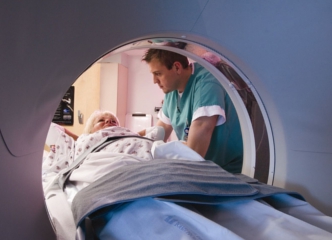
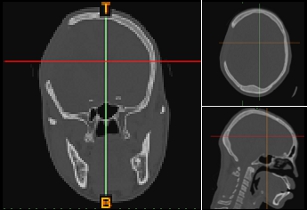
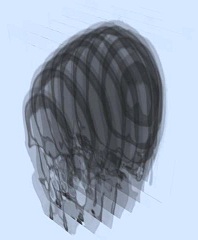
Left: Patient and doctor with MRI machine. (Image credit: NIH Department of Health and Human Services).
Middle: Orthogonal views from CT scan image data. Right: Stacked scan data image slices.
The cross sectional images from the scan data are organized, reviewed, and structures of interest are selected (segmented) to construct three dimensional surface models of the anatomy. BMI also offers biomedical and anatomical engineering services that go beyond anatomical replication. For example, a reconstructive implant may be designed using mirrored anatomy, or assembly features may be added to a functional model intended for educational use.
Prior to fabrication of the model, three dimensional drawings can be provided for review and approval. These digital surface models are then built to produce physical Biomodels using additive fabrication (see "Model Fabrication Process" below).
We can fabricate Biomodels out of a variety of materials, including transparent, translucent, and opaque materials, which can be either rigid or flexible. Specific features can be colored if needed. Soft tissue gingival models and customized implants may then be fabricated using the Biomodel as a mold or template. Our Biomodels may also be used as sacrificial mandrels for casting in silicone and other materials.
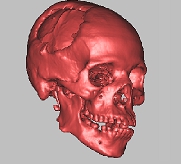
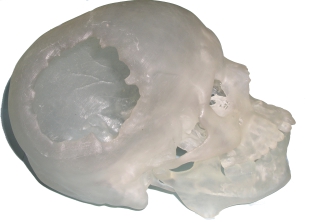
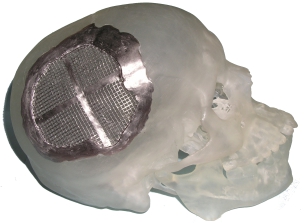
Left, middle: Digital 3D surface model and physical Biomodel of injured skull. Right: Biomodel with patient-specific cranial plate.
BioCAD models are digital anatomical models that are compatible with computer-aided design and manufacturing (CAD/CAM) software used in engineering. More specifically, the three dimensional data of complex anatomical geometries are translated from point clouds or digital surface meshes into NURBS surface models that can then be more readily used by biomedical engineers for design modification and analysis. BioCAD models often combine anatomical geometries with mechanical features for applications such as medical device testing.
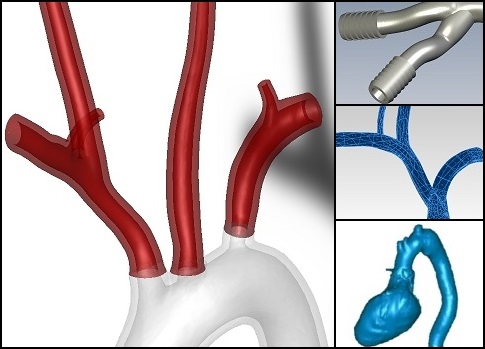
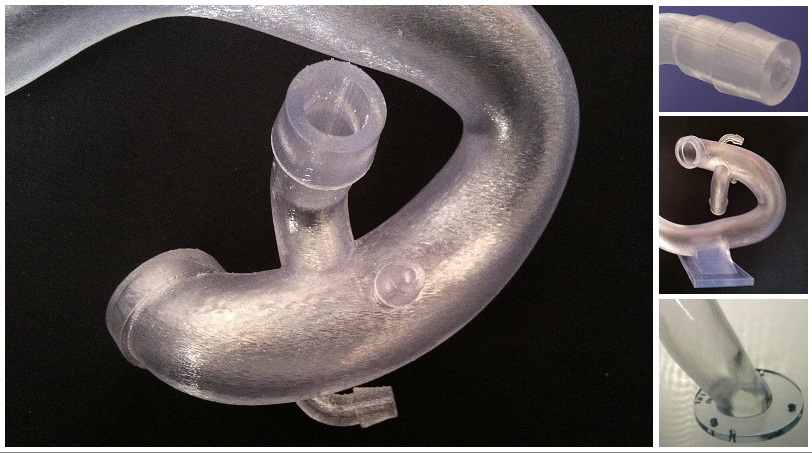
Left: BioCAD models of modified vasculature with fittings. Right: Biomodels depicting ports and fittings incorporated into vasculature anatomy.
Physical Model Fabrication Process
Originally developed for engineering purposes, additive manufacturing enables the fabrication of anatomical structures containing complex, irregular geometries that would otherwise be difficult to accurately reproduce. A 3D rendering of the part is generated. Software is then used to slice the file from top to bottom. The slice data is then sent to a machine that fabricates the part layer by layer. The majority of the Biomodels that we produce are fabricated using stereolithography, an additive manufacturing process. Models are built from a photopolymer resin that is exposed to light from a computer-guided UV laser. The laser traces the pattern of the cross-sectional slice data on the surface of liquid resin. The UV laser light cures the exposed resin, causing it to solidify. An elevator platform lowers the model incrementally and a blade then sweeps across the cross section, coating it with additional liquid resin for the next layer. This process is repeated until all layers of the model have been built. The model is then immersed in a chemical bath to remove excess material, cured in a UV oven, and a protective coating is applied. The typical slice thickness is 0.15 mm, thinner than CT slices which range from 0.2 mm to 3 mm. Biomodels can be made out of resins that are USP class VI approved for sterilization and use in the operating room. A variety of material and post processing options are available for our Biomodels including colored or translucent resin, modeled textures, and polishing. |
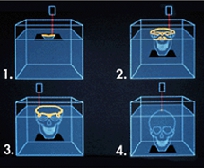
Figure depicting Biomodel fabrication via stereolithography. 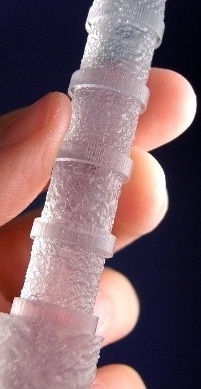
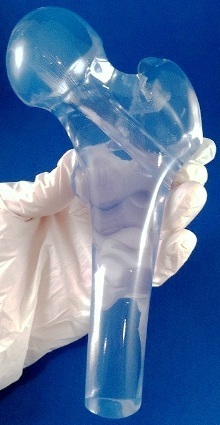
Left: Model with texture applied. Right: Polished model. |
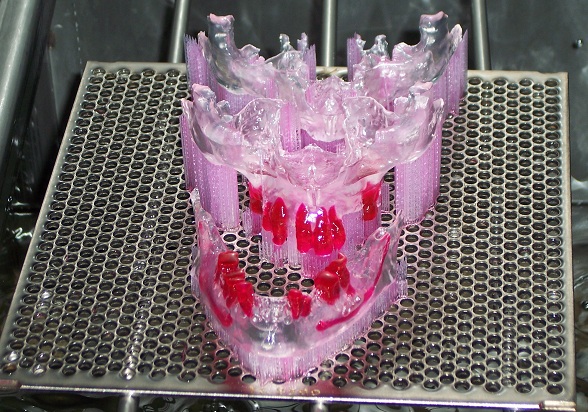
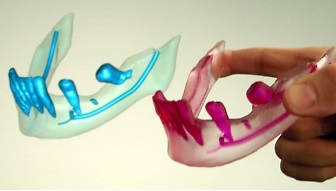
Left: Fabrication of maxilla and mandible jaw models. Right: Juxtaposition of digital surface model and physical Biomodel of mandible.
|